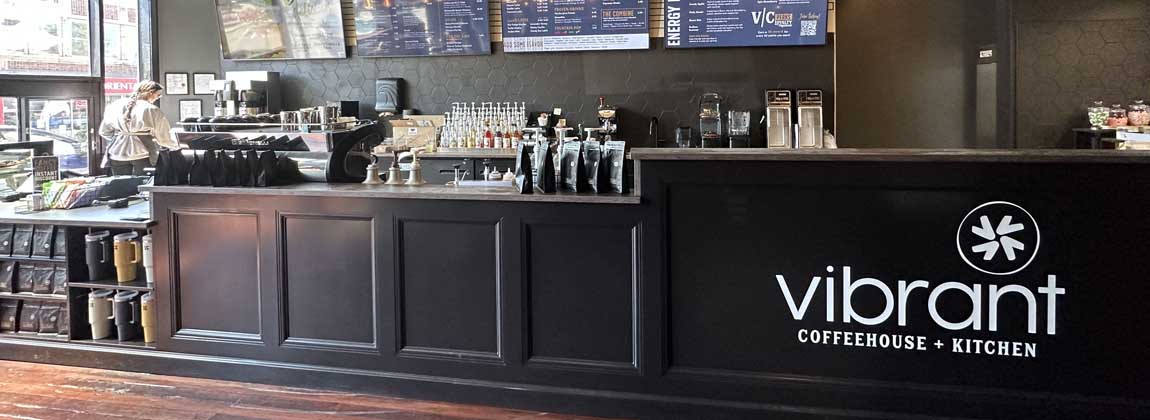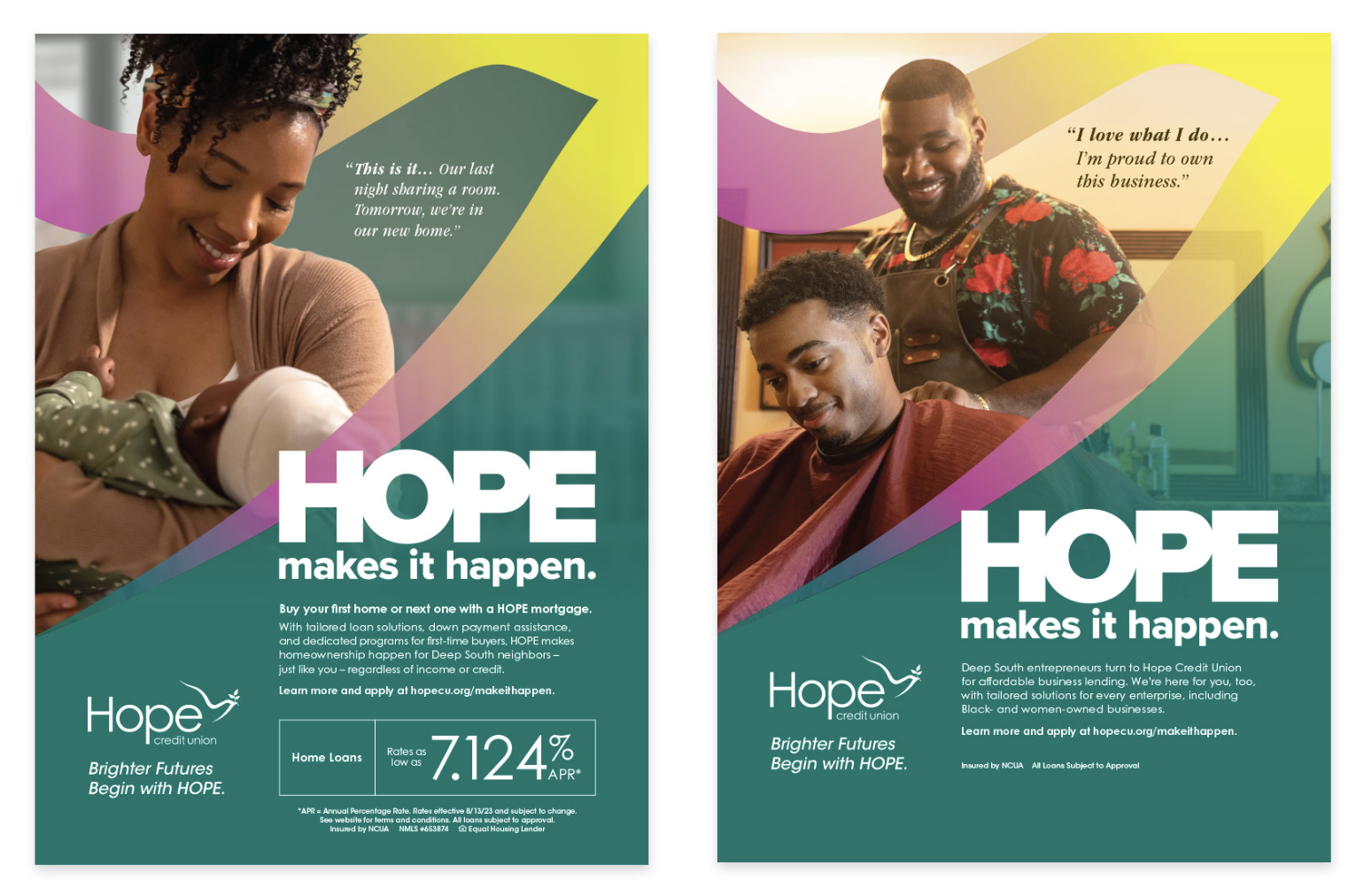























Proprietary tools to help you find and win your most valuable audiences.


Clarifying ideas to find your authentic and unique place in crowded markets.

Galvanizing platforms and sharp communications that help you activate across audiences.


Insight and decision-making tools that simplify how you go to market.










Breakthrough creative ideas that grab your audiences’ attention and get them to act.


Everything from logo to animation style to make your brand more dynamic and relevant.


Dynamic websites and experiences that activate your brand in critical channels.


EVPs and campaigns that align and inspire one of your most important audiences.


Proprietary tools to help you find and win your most valuable audiences.


Clarifying ideas to find your authentic and unique place in crowded markets.

Galvanizing platforms and sharp communications that help you activate across audiences.


Insight and decision-making tools that simplify how you go to market.


Breakthrough creative ideas that grab your audiences’ attention and get them to act.


Everything from logo to animation style to make your brand more dynamic and relevant.


Dynamic websites and experiences that activate your brand in critical channels.


EVPs and campaigns that align and inspire one of your most important audiences.
VSA is a marketing and branding agency that’s always searching for a better way. We’re forever curious, never precious. Never satisfied.
From our earliest days as one of Chicago’s premier design firms to building brands and creating campaigns for some of the world’s most loved companies, clients know us for rolling up our sleeves, collaborating and solving challenges together.

At the end of the 2024–25 season, the Professional Women’s Hockey League (PWHL) announced the addition of its Seattle franchise. While this expansion team is still unnamed, creative agency VSA Partners couldn’t wait to welcome the team to the league.
Meet the Seattle Mutiny—a potential new name and brand identity for the team, created by VSA Partners.

“This was a passion project for sure,” said Associate Creative Director of Design Heather Stickney, who brought the opportunity to her team at VSA Partners. “I’ve been a Seattle Kraken fan since I moved to the area a few years ago, and I was really excited to hear we were getting a professional women’s hockey team. It felt like a way I could give back to my community and further advance women’s sports.”
Heather was quickly joined by Janelle Blasdel, Creative Director of Writing, to tackle naming and branding the team, along with Cody Fenske, Associate Creative Director of Design, for design support. The team treated the project as if it came from a client brief, exploring a broad range of names and territories.
“We knew we needed a clever, eye-catching design system that nods to Seattle’s iconic culture,” said Cody.
They finally settled on the one that felt right: Seattle Mutiny.
“There were a few favorites for us: Fog, Seismic, Emeralds,” Janelle said. “But Mutiny was our favorite. It’s fierce, exciting and a great seaworthy complement to ‘Kraken.’ Plus, fans could then call themselves the Mutineers, which really sealed the deal for us.”

The new identity uses the team’s existing cream and emerald green colors but progresses the brand with a new logo centered on the Space Needle and a vibrant orange accent.
“It’s a big moment for Seattle and for women’s sports,” said Chief Creative Officer Curt Schreiber. “Whatever the team decides, I’m really proud we raised our hands and put something out there.”
This project is part of an ongoing program by VSA Partners calls “Design for Better”—an ambitious journey to redesign logos, websites, apps, packaging and more. Part creative sketchpad and part contribution to businesses, brands and society, these uncommissioned solutions are generated simply for the love of the game. You can see the collection to date at design4better.co.


This article was originally published in The Financial Brand.
Fintechs are sleek. Megabanks seem to be everywhere. And being “local” alone no longer closes a deal.
In a financial services world where geography is optional and digital expectations are sky-high, community banks and credit unions face an existential question: How can we matter more to the people we serve?
The answer is brand.
Not as a marketing afterthought, but as a strategic engine that defines relevance, builds trust and turns transactions into relationships.
In some ways, brand is the only asset most institutions fully own, and it’s also one that can’t be commoditized. It shapes how people feel about your institution before they ever walk through a door or download your app. It’s the reason someone chooses you over a fintech with a better interface or a megabank with deeper pockets and more locations. Brand determines how often you come up in conversations among community members.
In a crowded, digital-first financial ecosystem, brand isn’t the icing, it’s the infrastructure.
Brand is more than aesthetics and visuals. It’s about how people feel about your institution, and how those feelings turn into action. Done right, brand gives community financial institutions the ability to:
Here are five ways community banks and credit unions are using brand as a lever for growth, and winning.
Don’t just say “We’re local.” Prove why it matters.
Today’s customers may live in your market, but they also live online. Instead of relying on geography, define your value through purpose, focus or community impact.
Case in point: Teachers Federal Credit Union
Originally centered around educators, TFCU has embraced a purpose-driven brand to expand its reach without losing its mission. By highlighting empowerment through education and designing specialized financial products, the organization has retained credibility while growing membership.

Trust, empathy, mission — these are emotional ideas. Treat them that way.
Instead of messaging that lists features or rates, lead with human benefit and purpose. Why do you exist? Who are you for? Why should someone care?
Case in point: Redwood Credit Union
When wildfires devastated communities in northern California, it became a symbol of recovery. Redwood CU’s campaigns told emotional, member-led stories and reinforced its longstanding role as a community pillar.

A visual refresh can signal relevance without abandoning heritage.
Many institutions haven’t touched their identity in years. But a dated look sends the wrong message, especially to digital natives. The key is evolution, not reinvention.
Case in point: First Horizon Bank
Following its merger with Iberiabank, First Horizon undertook a brand refresh to unify the two institutions. The new visual identity blended clean, modern design with regional warmth, preserving familiarity while signaling a future-ready mindset.
.png)
Surprise and delight aren’t just for big brands.
Map key interactions, online and off, and find places to infuse them with your brand values. From onboarding to app user experience to how your staff answers the phone, brand can show up in meaningful, unexpected ways.
Case in point: Vibrant Credit Union
Vibrant redesigned branches and customer onboarding with hospitality in mind — drawing inspiration from Apple Stores and boutique hotels. Even its ATM screens feature playful, brand-consistent messages that stand out in an otherwise mundane category.

Integrated marketing isn’t just multichannel, it’s multidimensional.
Today’s campaigns must speak to both hearts and minds, combining digital fluency with your authentic voice. Use brand as your north star for every touchpoint, from social media to branch signage.
Case in point: Hope Credit Union
HOPE serves historically underserved communities across the Deep South, combining community-driven storytelling with powerful, mission-based messaging. Its campaigns bridge local activism and financial education, all under a clear, authentic brand mission.

The middle ground is disappearing. But that doesn’t mean there’s no room to grow. Brand-savvy community banks and credit unions have a once-in-a-generation opportunity to punch above their weight, not by acting bigger, but by acting bolder.

See the ads that have people commenting “Am I being trolled?”, “Someone call the exorcist” and “Wait, was this on purpose?” (Yes. Yes, it was.)
We’re super excited to share the “Keep It Real” campaign, created in partnership with computer security company McAfee. “Keep It Real” raises awareness about the rise of AI-driven scams while also working to shift the culture of shame that surrounds being scammed.
The campaign blends thumb-stopping digital ads that use AI to spark conversation about what’s real and fake online with Scam Stories—a movement that empowers scam survivors to speak out, reduce stigma and help others stay safe. Together, these elements create a powerful, human-centered effort to inform, connect and protect.
“By using AI in our ads with intention, we’re recreating the same confusion and doubt people experience when faced with a scam, creating a need to look twice,” said Stephanie Fried, Chief Marketing Officer at McAfee. “And in parallel, Scam Stories gives voice and power to the real people behind those moments. Holistically, this campaign helps shift the narrative from shame to understanding, and reminds people that anyone can be fooled. Seeing is no longer believing—we cannot rely on our instincts to help us tell real from fake. We need powerful tools to keep us safe and give us peace of mind.”
The creative ad campaign was developed in partnership with VSA Partners and launched alongside McAfee’s Scam Detector, a new feature that uses AI to automatically spot scams across text, email and video. While the ads lean into the surreal, the message is serious: With AI blurring the lines between real and fake, people need help telling the difference.
The campaign’s digital ads—set against a variety of backgdrops, including travel, weight loss and tolls—were designed to make people pause and think. One of the first spots to gain traction shows a woman lounging on a beach when her head suddenly rotates a full 360 degrees. Online reactions were immediate. Some assumed it was a post-production error. Others thought it was a deepfake gone wrong. And while a few viewers realized it was intentional, many were left wondering whether the moment was accidental or planned. That uncertainty was part of the point.
“The ads are clearly artificial—but that’s intentional,” said Anne-Marie Rosser, CEO of VSA Partners. “We wanted them to feel just real enough to make people pause. That moment of confusion reflects what so many people experience online today—AI is harder to spot, and it’s easier than ever to get tricked. By creating that tension, we’re helping people connect emotionally and recognize how vulnerable we all are to deception.”
Based on initial results, the verdict is out—people are ready and hungry for this kind of conversation. McAfee is already seeing an impact from these ads, with social engagement 50% above benchmark and CTR 55% above benchmark.
The second pillar of the campaign, Scam Stories, is a social series built around the voices of real scam survivors—stories from people who’ve been scammed and are speaking up to help others stay alert. From concert ticket scams to spoofed customer service texts, people are sharing their experiences using #KeepItReal and #MyScamStory, and helping others stay alert in the process. Among the first to participate are actor Chris Carmack and his wife, performer Erin Slaver, who share how even they were misled.
To extend its impact, McAfee has partnered with FightCybercrime, a nonprofit that helps people recognize, report and recover from scams. As part of the partnership, McAfee is donating $50,000 worth of online protection to individuals in FightCybercrime programs, as well as to the staff and volunteers who support them. The partnership will also include new efforts to expand online safety education.
To help drive greater awareness of the value of Scam Detector, McAfee has also partnered with several popular influencers to educate their audiences about the rise in scams and how to stay safe. Look out for comedic and informative content from recognizable names such as Alexandra Madison (@alexandramadisonn), Theo Shakes (@theo_shakes) and Kristen Knutson (@callmekristenmarie).
From surreal visuals to real-life voices, every part of the campaign was designed to blend technology and empathy, showing how creative marketing can spark conversation, shift perception and drive action. ”Keep It Real” brings McAfee’s brand purpose to life in a way that feels real, human and impossible to ignore.
Visit Scam Stories to view the campaign, submit a story or learn more about McAfee’s Scam Detector.